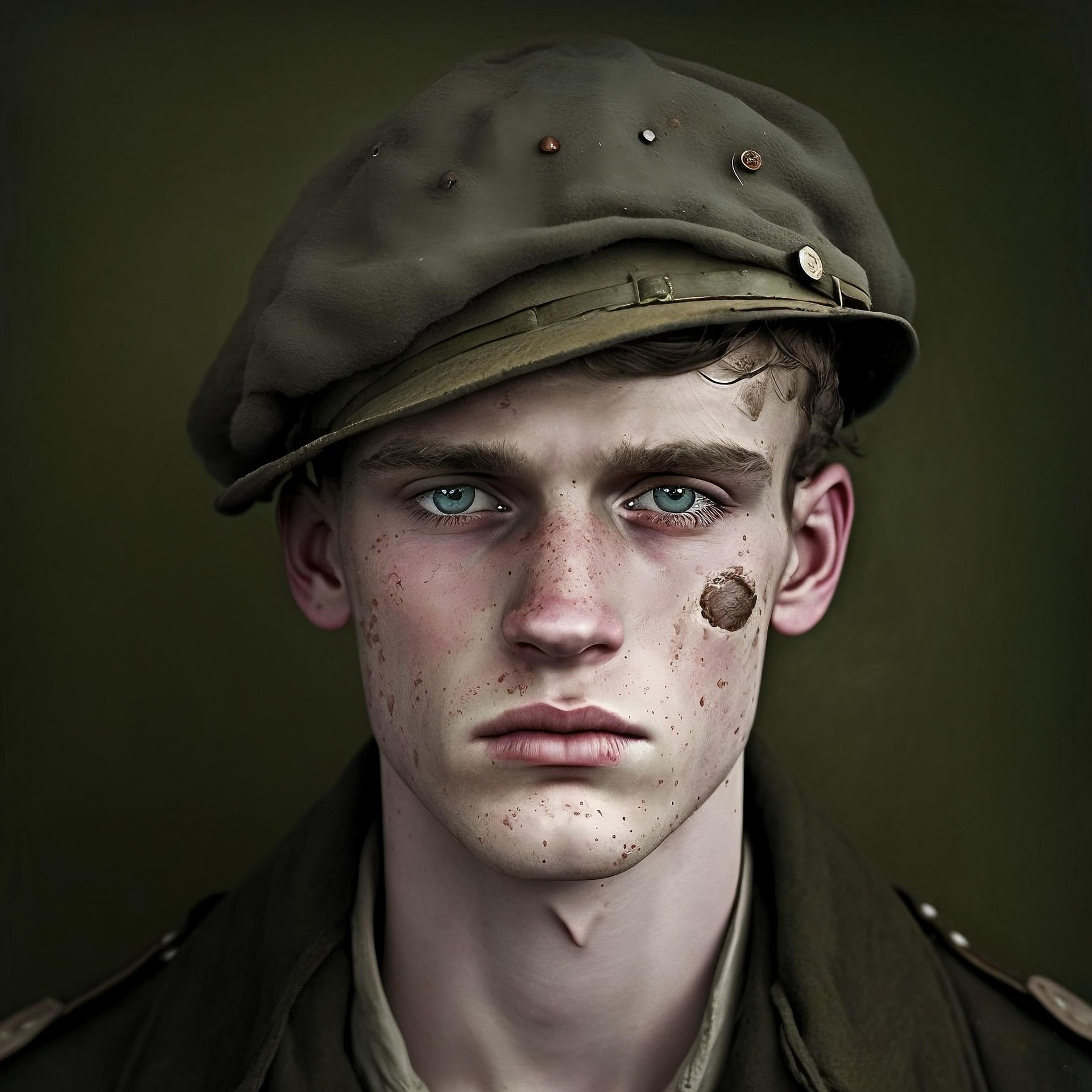
British Uniforms of World War 1: A Complete Guide to WWI Military Attire
Published on Feb 21, 2025
British Uniforms of World War 1: A Complete Guide
Introduction: The Importance of Uniforms in WWI
World War 1 was a conflict that demanded adaptability from armies on all fronts. Initially designed for traditional warfare, the British military uniform had to evolve to meet the brutal realities of trench combat. Uniforms served as identification and played a crucial role in protection, camouflage, and morale.
The Evolution of British Army Uniforms in WW1
1. The Pre-War Uniform: Redcoats to Khaki
Before World War 1, the British army was known for its striking red uniforms. However, by the late 19th century, the British had already transitioned to khaki to provide better camouflage, especially after experiences in colonial conflicts such as the Second Boer War. The khaki service dress introduced in 1902 became the standard uniform as Britain entered WWI in 1914.
2. The Khaki Service Dress (1914-1918)
The standard British army uniform at the start of WWI was the Khaki Service Dress, which included:
- Tunic: A woollen, high-collared jacket with four pockets.
- Trousers: Woolen breeches designed for durability and comfort.
- Puttees: Long woollen cloth strips wrapped around the lower legs for protection and support.
- Brogans (boots): Sturdy leather ankle boots suitable for harsh terrain.
- Headgear: The iconic Brodrick Cap, later replaced by the Service Dress Cap.
The Impact of Trench Warfare on Uniform Design
As trench warfare became the dominant style of battle, new challenges arose. Though effective at first, the standard uniform needed modifications due to mud, cold, and the advent of chemical warfare.
3. The Introduction of Steel Helmets (1916)
One of the most significant changes was the replacement of the soft Service Dress Cap with the Brodie Helmet in 1916. This steel helmet provided much-needed protection against shrapnel and debris.
4. Trench Coats and Waterproof Gear
Trench conditions necessitated better waterproof clothing. The trench coat, initially a civilian item, was adapted for military use to provide warmth and protection from the elements.
5. Gas Masks and Respirators
With the use of chemical weapons such as mustard gas, British soldiers were issued PH Gas Masks and, later, the improved Small Box Respirator to protect against toxic fumes.
Insignia and Rank Identification
Rank insignia played a crucial role in distinguishing officers and enlisted men.
- Officers: Typically wore piped tunics and carried swagger sticks.
- Non-Commissioned Officers (NCOs): Identified by chevrons on their sleeves.
- Patches and Badges: Regimental insignia and unit patches helped identify soldiers' roles and battalions.
Specialized Uniforms for Different Units
While most foot soldiers wore the standard khaki uniform, some specialized units had distinct attire:
- Royal Flying Corps (RFC): Pilots wore leather coats and flying helmets for protection in open cockpits.
- Royal Artillery: Wore similar uniforms but with distinguishing flashes and lanyards.
- Nurses and Medical Staff: The Voluntary Aid Detachment (VAD) and Queen Alexandra's Imperial Military Nursing Service (QAIMNS) wore white and blue uniforms with red crosses.
The Legacy of British WW1 Uniforms
The uniforms of World War 1 left a lasting impact on British military attire. Lessons learned during the war influenced the design of World War 2 uniforms, prioritizing practicality, protection, and adaptability.
Conclusion
British uniforms during World War 1 underwent significant changes to adapt to the realities of modern warfare. From the iconic khaki service dress to the introduction of steel helmets and gas masks, these uniforms played a vital role in the survival and efficiency of British soldiers. Today, WW1 uniforms remain an essential part of military history, studied by historians and collectors alike.
By understanding the evolution of British WW1 uniforms, we gain insight into the daily experiences of soldiers who fought in one of history's most devastating conflicts. Whether you're a historian, reenactor, or military enthusiast, appreciating these uniforms helps keep history alive.
